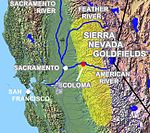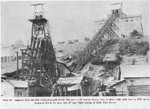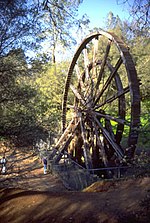Sutter Creek, California
1848 establishments in CaliforniaCalifornia Historical LandmarksCities in Amador County, CaliforniaIncorporated cities and towns in CaliforniaJohn Sutter ... and 3 more
Mining communities of the California Gold RushPopulated places established in 1848Use mdy dates from July 2023

Sutter Creek (formerly spelled Sutter's Creek and Suttercreek; formerly named Suttersville) is a city in Amador County, California, United States. The population was 2,501 at the 2010 census, up from 2,303 at the 2000 census. It is accessible via State Route 49.
Excerpt from the Wikipedia article Sutter Creek, California (License: CC BY-SA 3.0, Authors, Images).Sutter Creek, California
Eureka Street,
Geographical coordinates (GPS) Address Nearby Places Show on map
Geographical coordinates (GPS)
| Latitude | Longitude |
|---|---|
| N 38.393055555556 ° | E -120.8025 ° |
Address
Eureka Street 1
95685
California, United States
Open on Google Maps





